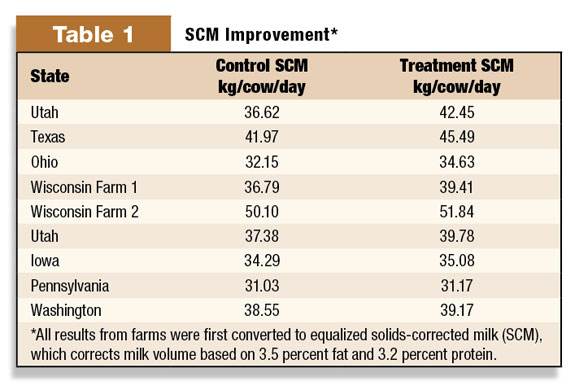In some respects, the concept is similar to that which occurred in recent years regarding fat and carbohydrates. Just as we learned that it’s not just fat in a dairy diet that’s important, but the individual fatty acids contained therein.
Or when it was discovered that it’s the components of the different carbohydrates – like sugar, starch and soluble fibre – that matter, not only total ration carbohydrates.
This same principle is being applied with protein – the cow doesn’t really need protein. She needs the individual amino acids that make up the protein.
New ration balancing programs allow dairy farmers and nutritionists to more precisely balance ration protein with more accuracy than ever before by looking at key amino acids.
Meet cow needs
Dairy cows have nutrient requirements rather than ingredient requirements. Protein is one of the key nutrients dairy cows need for optimal growth, milk components and milk production, reproduction and immunity.
Protein is made up of amino acids, which are the building blocks of protein synthesis.
Lysine and methionine are two of these essential amino acids. These are also the two most often deficient, or limiting, in dairy rations.
They cannot be synthesized from other amino acids or precursors. Consequently, they must be delivered in the diet. Inadequate levels of these two essential building blocks for protein synthesis mean that milk components and milk production can suffer.
Meeting lysine and methionine needs is often a challenge for nutritionists and we have historically overfed protein to make sure cows received enough of these two limiting amino acids.
While this is well-intended, overfeeding protein is an inefficient strategy that results in cows excreting costly unused nutrients like nitrogen and phosphorus back into the environment.
To help feed cows more closely to their actual requirements, dairy farmers and nutritionists have turned to amino acid balancing. This tool offers a more efficient way to ensure the delivery of optimal amounts and ratios of lysine and methionine.
Performance payoff
Research clearly shows a benefit to balancing the ration for amino acids.
1. Studies featuring cows from Penn State University’s dairy show that when the herd’s ration was balanced for metabolizable protein and amino acids instead of crude protein, cows increased production by 2.72 kilograms and milk components increased too.
- The diet was reformulated with 16 percent crude protein versus the dairy’s historical 18 percent crude protein level.
- Study results also indicate the herd’s nitrogen efficiency rose by 4.6 percent over its historical average after this change, leading to a decrease in nitrogen excretion and waste.
2. Other studies show balancing for amino acids results in increases in total milk protein production. Increases in milk protein levels of 0.2 are possible in circumstances where a deficiency exists.
Anecdotally, it’s not uncommon for dairies to see an increase of 0.1 with amino acid balancing – that is, going from 3 percent milk protein to 3.1 percent milk protein.

3. In addition, results from on-farm feeding trials with nine large U.S. dairies also demonstrate that balancing rations for amino acids makes a positive impact on herd performance. (See Table 1.)
All herds in the feeding study improved the production of solids-corrected milk (SCM) compared to herd performance prior to the ration change.
These responses were converted to SCM to account for improvements in milk volume, fat and protein, or a combination of all three.
Check your ration
When the diet delivers optimal levels of lysine and methionine – 7.5 percent lysine and 2.5 percent methionine – as a percentage of metabolizable protein, more protein can be produced by the cow for additional milk and milk components.
However, corn grain and corn byproducts like dried distillers grains contain very little lysine. Soybean meal – which is often purchased to increase ration crude protein – contains much less methionine than a lactating dairy cow requires for optimal production.
There are a number of feed sources that can provide amino acids. Be aware that commodity lysine sources, particularly blood meal, can be extremely variable in quality and digestibility.
Search out consistent rumen bypass sources to ensure optimum levels of lysine and methionine are delivered through the diet to improve performance.
When considering amino acid balancing, your first step must be to work with your nutritionist to evaluate your ration to see whether it is deficient in these key limiting amino acids. Then you can determine what you can do to improve the ration.
Well-managed dairies with outstanding nutrition management in place will reap the largest benefit from amino acid balancing.
Individual financial implications will depend on milk component prices, how much you can improve milk protein levels in your herd and the cost of crude protein and how much you can reduce ration crude protein levels.
As the feeding trials showed, however, it’s a tool worthy of consideration when searching for ways to maximize production capabilities, increase efficiency and decrease environmental impacts. PD
References omitted due to space but available upon request. Click here to email an editor.

- Elliot Block
- Senior Manager Technology
- Arm & Hammer Animal Nutrition









